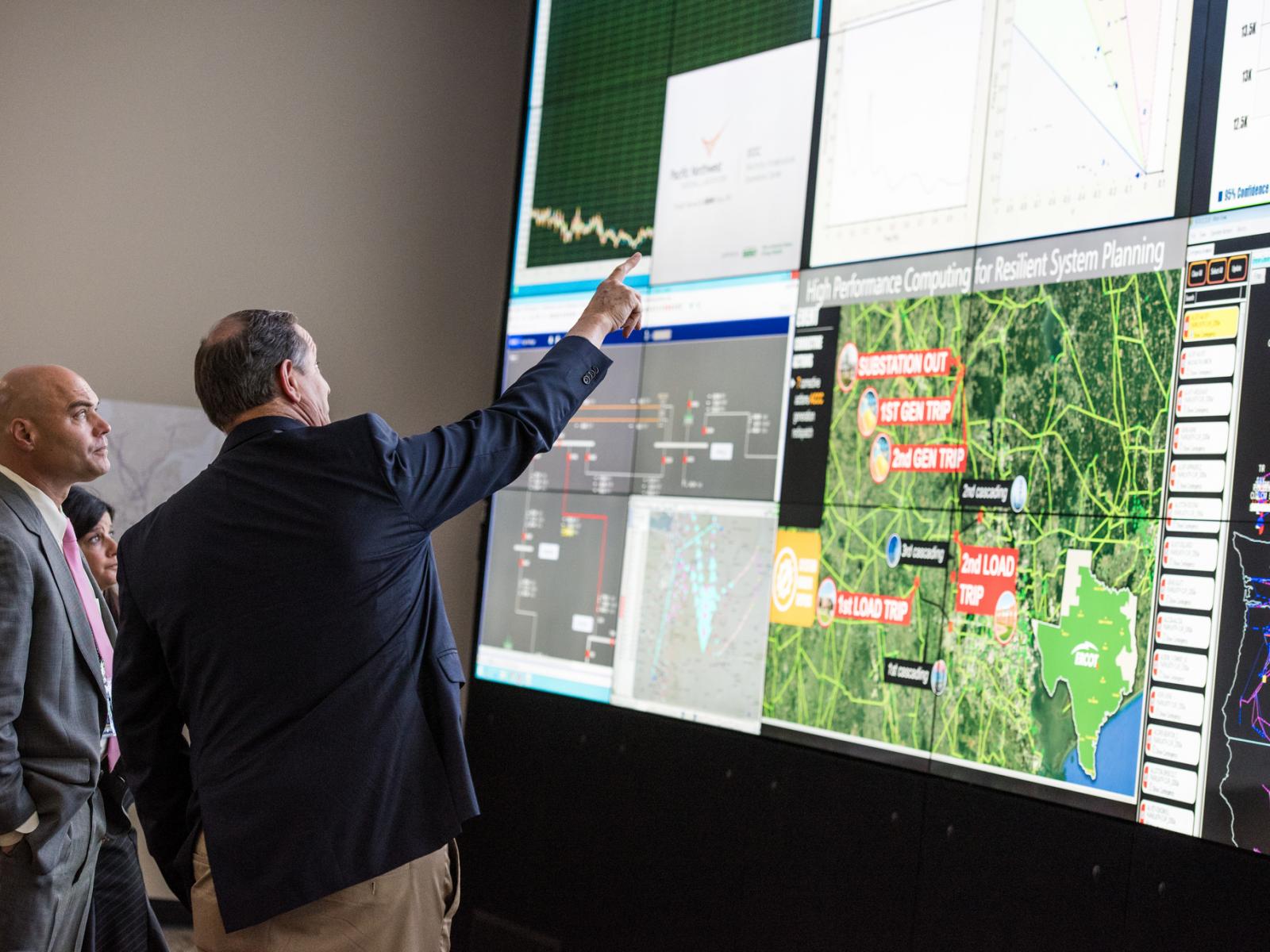Making it Modern: PNNL Infuses Innovation into Nation's Electric Grid
Researchers at the Department of Energy's Pacific Northwest National Laboratory are helping to lead a similar transformation of the nation's century-old electric grid by developing and deploying new technologies to enhance its reliability, resiliency and security.

Bruce Walker, the Department of Energy's Assistant Secretary for the Office of Electricity, learned about PNNL's grid modernization projects during his visit to PNNL last summer.
Photo courtesy of Pacific Northwest National Laboratory
A century is a long time when it comes to technology.
In 100 years, cars have evolved from the Model T to luxury vehicles that practically drive themselves, and smartphones have replaced party lines and rotary-dial telephones.
Researchers at the Department of Energy's Pacific Northwest National Laboratory are helping to lead a similar transformation of the nation's century-old electric grid by developing and deploying new technologies to enhance its reliability, resiliency and security.
Although the grid has been called the 20th century's greatest invention, it is struggling to meet the demands of the 21st century.
We still expect affordable illumination at the flip of a switch, but today's grid also must power sensitive instruments, insatiable data centers and a growing fleet of electric vehicles.
It must accommodate distributed and intermittent energy resources such as solar and wind, allow consumer customization, and be resilient in the face of extreme weather events and cyber threats. Edison and Westinghouse would be incredulous.
These challenges are daunting, but PNNL experts in power engineering, computer science, data analytics, materials science and cybersecurity are working hard to address them.
For example, PNNL and Spokane-based Avista recently announced plans to collaborate on new energy management software that will enable utilities to better manage peak load and energy demand while giving customers greater control over their energy usage and costs.
Another PNNL innovation has been incorporated into software that utilities and grid operators use to plan their investments and operations.
With support from the Bonneville Power Administration, researchers developed novel algorithms and employed advanced computing to speed the analysis of real-time frequency and voltage data.
This allows one to understand how a power plant will behave under various conditions — doing in seconds what used to take a day and cost tens of thousands of dollars.
In another project, funded by DOE and the Washington State Clean Energy Fund, PNNL and Washington State University researchers are demonstrating the power of "transactive energy management."
This PNNL innovation uses secure two-way communication between a building and a utility to enable them to work as partners in managing how the building's loads, such as lighting, refrigeration and air conditioning can be optimized. In one experiment, the electricity used by a rooftop HVAC unit was cut in half.
PNNL developed VOLTTRON, the underlying technology, which is similar to an operating system for building control and energy management.
The open source software platform is now being stewarded by the Eclipse Foundation for further development.
As noted above, PNNL is partnering with others to create tomorrow's power grid. Central to this effort is the DOE Grid Modernization Laboratory Consortium, which PNNL co-leads.
This consortium brings together 13 national labs and experts from academia and industry to develop new solutions for planning, managing and operating the electric grid.
The results of the consortium's first 88 projects are now being shared with industry. Last month, for instance, PNNL hosted 250 leading researchers, industry representatives and senior DOE leadership in Seattle to accelerate the commercialization and deployment of these innovations.
As we strive to modernize the nation's power grid, PNNL and our collaborators will continue these efforts and initiate new ones.
For example, we will help to design a national energy system model, advance grid-scale energy storage innovations to enhance resiliency and improve cybersecurity.
In partnership with regional utilities, technology providers, research universities and policymakers, PNNL will tackle grid modernization challenges to address the nation's need for clean, reliable and affordable electricity.
Published: February 25, 2019